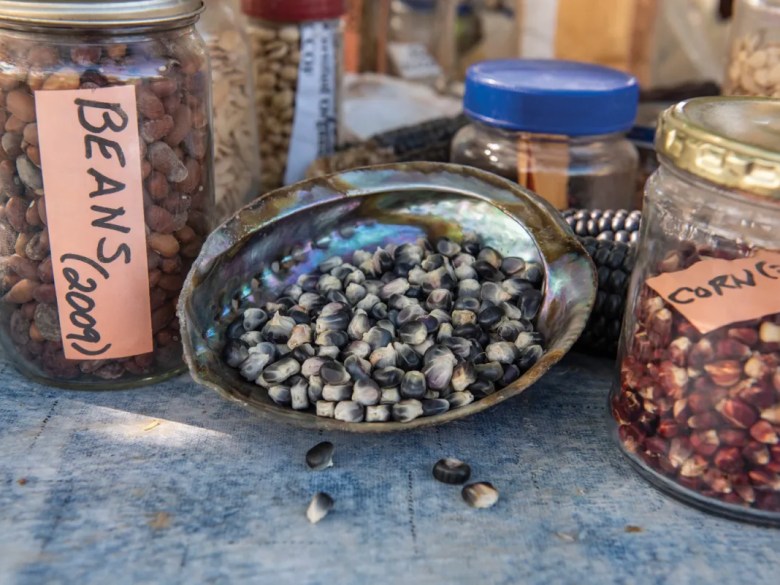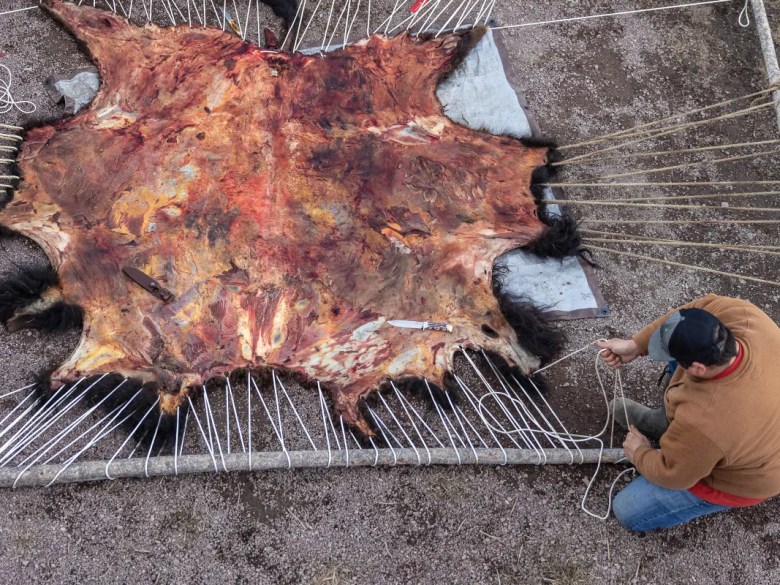The Arctic is warming twice as fast as the rest of the planet, according to the National Oceanic and Atmospheric Administration, with dire effects. In September 2022, remnants of Typhoon Merbok damaged more than 35 communities along 1,300 miles of Alaska’s west coast, destroying food, fishing gear and camps that had been used for subsistence harvesting for generations.
In addition, warmer water temperatures are contributing to low numbers of fish in the once-bountiful Yukon and Kuskokwim rivers, resulting in closures or severe limits on fishing. The loss of this food source and the income from commercial fishing is a double whammy that disproportionately affects Alaska Native communities.
Yet the Bristol Bay region, the world’s most productive sockeye salmon fishery, saw a massive return — 54.5 million fish — in 2023. Ruth Łchav’aya K’isen Miller (Dena’ina Athabaskan and a member of the Curyung Tribe), co-founder and co-director of the Smokehouse Collective, a new mutual aid network across Alaska, sees the bay’s abundance as a boon that is “meant to be shared.”
Instead, “most of that fish is going to elite markets in the Lower 48 and in different countries,” said Deenaalee Chase-Hodgdon (Deg Hit’an Dene and Sugpiaq), the collective’s co-founder and co-director. “Meanwhile, here in Alaska, folks are not able to fill their freezers with fish.”
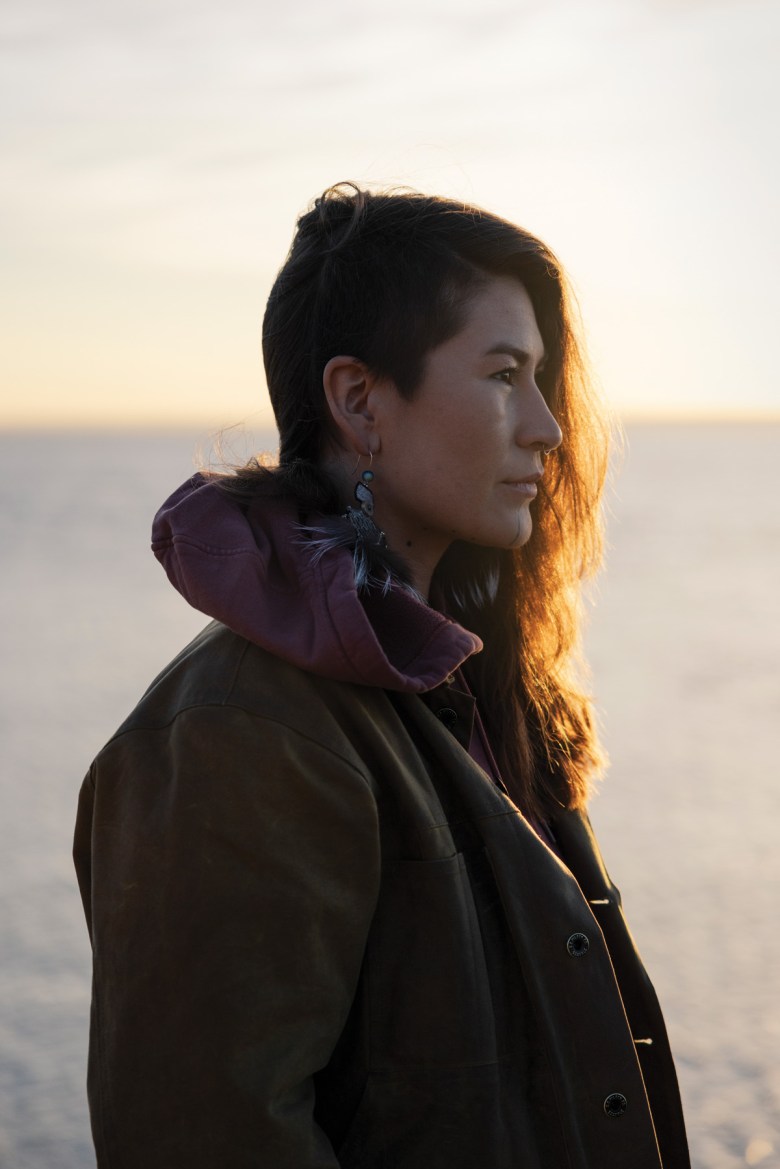
In response to the climate crisis, the collective aims to turn this economic system on its head by creating a gathering place and network for Alaska Natives to harvest, preserve — and give away — salmon and other traditional foods. Miller and Chase-Hodgdon have a radical vision: To reinvigorate ancient Indigenous trade practices as a means to redistribute wealth, return land and water in Alaska to Indigenous stewardship, and show that a healthy economy and clean environment can coexist.
Climate-related disasters threaten culture, language and lifeways as well as traditional foods. “(The collective) is not going to put more fish in the Yukon River,” said Miller. “We have to hold the grief and the trauma of this time as Native peoples, and the fear that all of us feel of what might come to our ecosystems and to our cultures.”


Smokehouse Collective co-founder Deenaalee Chase-Hodgdon collects blueberries in Interior Alaska to preserve and share with family, elders, community members and supporters (above). “Those berries are going to go to nurture the relationships that are helping to grow the Smokehouse Collective right now,” they said. “They’re making everything a little bit sweeter.”
Buckets of rosehips, crowberries, low-bush cranberries and blueberries that Chase-Hodgdon gathered in late summer. The climate crisis has deepened their desire to gather and store traditional foods like berries, which provide essential vitamins and nutrients for Alaska Native people.
Given that reality, the Smokehouse Collective arose out of a need for food security rooted in Indigenous sovereignty. Chase-Hodgdon said that people living in areas short of fish are missing not just a necessary food source, but the experience of harvesting and preserving, too. “People are really craving being able to put that net in the water, to be able to get the fish out of the water, to be able to do everything that it takes to participate in the holistic harvesting of salmon,” they said.
“We have to hold the grief and the trauma of this time as Native peoples, and the fear that all of us feel of what might come to our ecosystems and to our cultures.”
“We want to make sure that we as (Indigenous people) have networks in place to support our communities,” Miller said. It’s an investment in “our resilience as Native peoples to persevere in our cultures despite the global impacts we’re facing.”


Ruth Łchav’aya K’isen Miller, co-founder of Smokehouse Collective, stands with a partially tanned caribou hide before it’s smoked a final time. Revitalizing the practice of hide tanning represents a return “to traditional lifeways and networks of connection between our peoples that enable us to become more climate resilient, while also centering our cultures in this new future we’re living in,” Miller said.
Miller wrings a mixture of brain solution and water out of a caribou hide. “Hide tanning is a type of meditation … that contributes to our long-term health and well-being,” Chase-Hodgdon said. “It requires dedication and strength. It requires you to be committed to the process of the becoming of the hide. That is a process that we hope to really embed in all of the work that we do as Smokehouse Collective.”


It’s an investment in “our resilience as Native peoples to persevere in our cultures despite the global impacts we’re facing.”
Following fundraising that began in May, the collective bought a portable fish-processing plant and is purchasing land for it in Dillingham, on Bristol Bay. The plan is to build a smokehouse by summer. Miller said the collective also hopes to grow produce, and harvest moose, caribou and berries, so that it can trade across regions to provide healthy, sustainable, traditional foods to communities.

Chase-Hodgdon and their neighbor Dillon Bennett cut moose meat to dry (above left). “As a Deg Hit’an-Sugpiaq person, salmon, moose meat, caribou meat are all the foods that run through my bloodstream,” Chase-Hodgdon said. “My ancestors … had a relationship with each one of those animals, not just for food, but also for clothing and shelter.
Chase-Hodgdon filets a frozen Bristol Bay sockeye salmon which they plan to exchange for seal oil from Shishmaref (above center). This summer, Chase-Hodgdon helped process fish for seven families throughout Alaska. “The more that we’re able to put away according to everybody’s need — not taking too much from the lands and waters, of course — the stronger our community is going to be overall,” they said.
Chase-Hodgdon prepares jar-fish to send as gifts to board members and Smokehouse Collective supporters (above right). After the salmon are harvested and fileted, the filets are cut into strips and partially dried, then smoked with specific kinds of wood before being cut to size, packed and pressure-cooked. “Jar-fish is like the gold of our community, because there’s so much labor,” Chase-Hodgdon said. “There’s so much love that goes into it.”

Miller credits the collective’s early successes to its collaboration with both Native and non-Native allies, including fishermen who were willing to donate part of their catch and local airlines and pilots ready to distribute it to villages in need. “So much of what the Smokehouse Collective will be investing in the coming year is actually just bringing together a network that has already been quietly growing in the region,” she said. In expanding that network, Smokehouse is led by the values of Alaska Native peoples. “We are not just checking with our hearts and guts and spirits, but we’re in communication with our elders and our aunties and our uncles and the folks who are out on the water every day.”
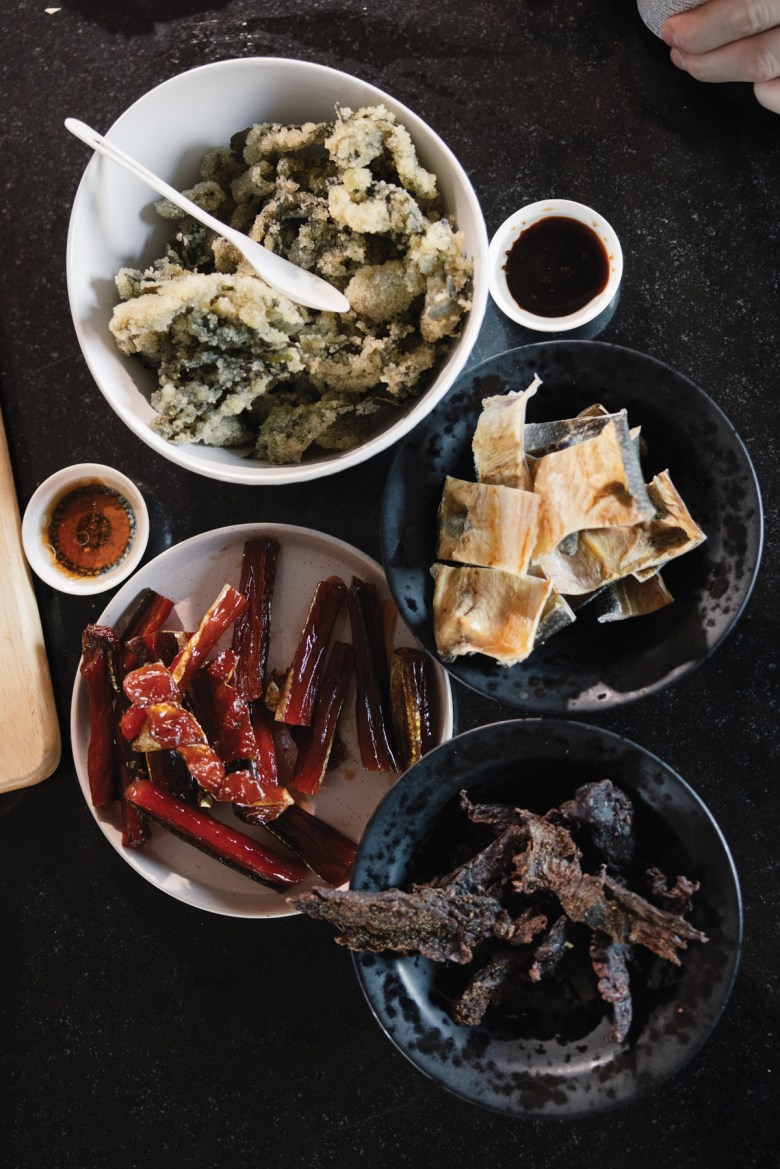
“We’re in communication with our elders and our aunties and our uncles and the folks who are out on the water every day.”
Dewey Kk’ołeyo Hoffman (Koyukon Athabascan), a board member, believes building economies based on caring for future generations is important: Every summer, he takes his young daughter to his home village on the Yukon River in Interior Alaska, even though they can’t fish there, and the fish camps and smokehouses are empty.
He envisions Smokehouse creating an opportunity for kids to work on fish, be with family, and rebuild trade networks and kinship ties. “As Athabascan people, we had routes and networks of bringing different food and objects all across trails, and those relationships are thousands of years strong.” The Smokehouse Collective is a way, he said, for Indigenous people to link arms and “bring in Indigenous-led efforts to again protect the lands and waters and also continue our ways of life.”
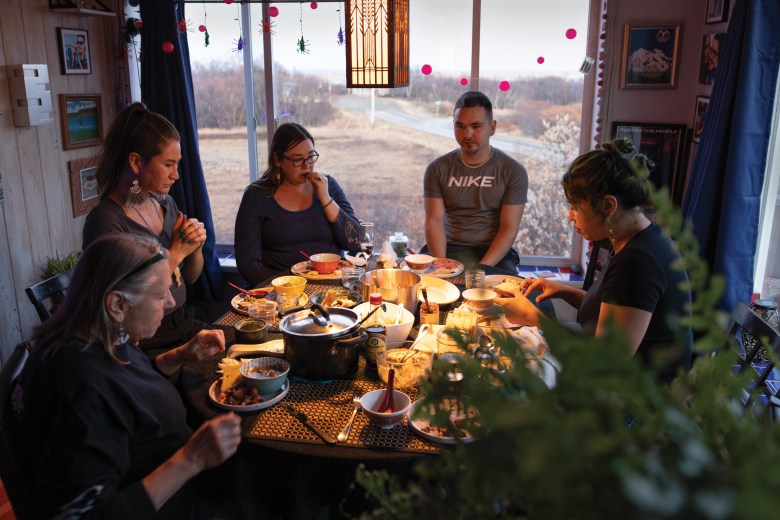
Joaqlin Estus (Tlingit) is a longtime Alaska journalist who works as a national correspondent for ICT (formerly Indian Country Today). She lives in Anchorage, Alaska.
We welcome reader letters. Email High Country News at editor@hcn.org or submit a letter to the editor. See our letters to the editor policy.
This article appeared in the print edition of the magazine with the headline Thousands of years strong.




